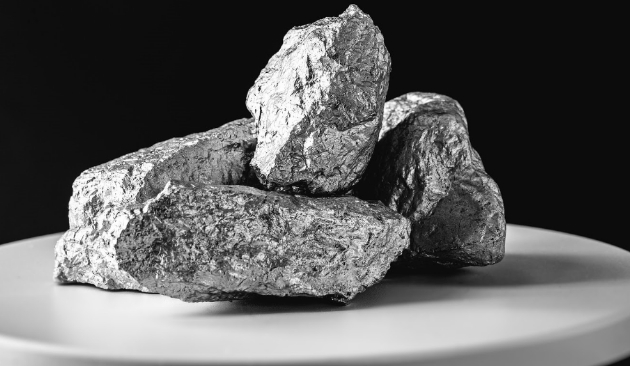
Calcined Anthracite Graphite is produced from anthracite of high quality that has been calcined. This process lowers the sulfur content, ash and volatile content in the coal. This process produces a product that is high in compressive strength and low in sulfur.
In the steel industry, it is widely used to produce carbon cathodes and anodes. The aluminium industry also uses it as an additive for smelting.

High electrical conductivity is what makes calcined ethyl anthracite a favorite material in the aluminum and steel industries. The global calcined anthracite market is expected to grow significantly in the next few years, driven by rising demand for steel and aluminum production, accelerating construction and automotive industries, and growing focus on renewable energy applications.
It is also used to reduce coal in electric and gas arc furnaces. It is also employed as a carbon additive for improving casting quality, minimizing metal penetration, and enhancing surface smoothness.
Investments are being made by companies to enhance product quality, maintain market leadership and increase their profitability. In this sector, direct current (DC), instead of alternating voltage is used to eliminate volatiles and moisture. The industry is also focused on strategic partnership and collaboration to help companies expand.
A carbonaceous substance is heated using an electric charge. This heating transforms a part of material into graphite. The material is dried out during the heating process. Material properties can vary depending on how high the calcining heat is.
The market for Electrically Calcined Anthracite graphite is mainly driven by the growing steel and aluminum industry. Market growth is anticipated in future years due to the increasing demand for green energy.
In electric calciners as well as rotary kilns or pot furnaces, electrically calcined coal is produced. Anthracite calcined in this way is free of ash, volatiles and sulfur. The anthracite has a high calorific content, oxidation rate that is slow, excellent compressive properties, and low heat conduction. It is widely used in aluminum industry to produce carbon electrode, cathode carbon block and cold ramming paste.
Electrically Calcined Anthracite (ECA) graphite has a low sulfur concentration, which is the major reason for its high demand as an additive. Comparatively, it has a smaller environmental impact than other carbon-based additives such as calcined coal. It is low in volatile matter and water, so it's ideal for the steel-making process.
ECA has two segments: product and applications. Markets are segmented by product. Gas calcined athracite is one type, and electrically causined athracite is another. Gas calcined anthracite holds the largest share in the market. Due to its purity and consistency, it is used as an additive in the aluminum industry.
Market growth is driven by the increasing demand for metal products in various industries. Demand for electric cars is expected to also boost the calcined-anthracite market. Fluctuations in raw material and transportation costs will however likely restrain market growth.
Over the next five years, it is anticipated that global demand for calcined alumina will grow at a significant rate. The increasing demand of carbon products, such as cathodes and graphite electrodes in various industries can be attributed. The growing demand for electric vehicles is also expected to fuel the growth of the calcined anthracite industry.
DC electric calcining is used to heat electrical anthracite up to 2000degC. This removes moisture and volatile material from anthracite. This produces anthracites with improved density and high compressive force.
In comparison to gas anthracite electrical anthracite contains low levels of moisture, ash, and sulfur. These characteristics make it an ideal material for manufacturing cathode-blocks in the aluminum sector. Also, it is used in the production of Soderberg and Ramming Pastes. Furthermore, anthracite retains its electrical properties even at high temperatures. All of these characteristics make anthracite ideally suited for use in many different industrial fields.

Write a Message